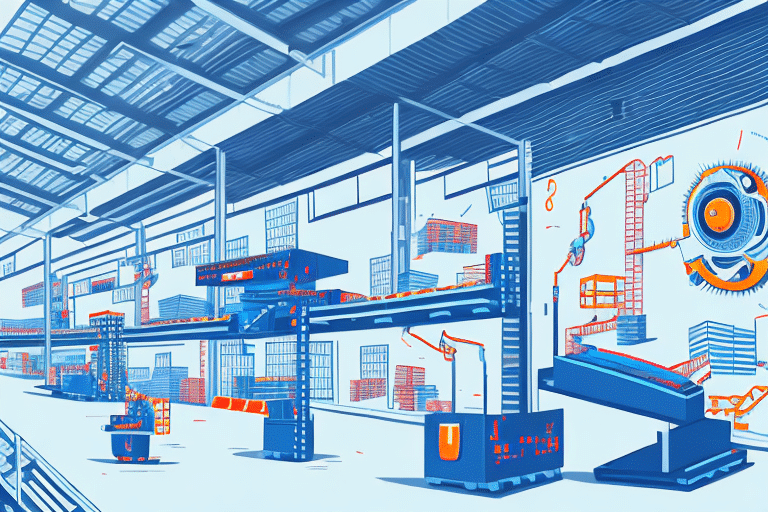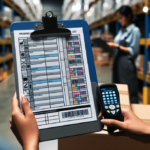AutoStore Warehouse Automation Software: Optimizing E-Commerce Shipping
As the e-commerce industry continues its rapid expansion, businesses seek innovative solutions to streamline their supply chain operations. AutoStore warehouse automation software has emerged as a leading solution, offering advanced technologies to enhance efficiency and accuracy in order fulfillment. This article explores how AutoStore can benefit e-commerce shippers, its key features, the underlying technology, implementation strategies, real-world case studies, and future trends shaping the industry.
Benefits of Implementing AutoStore for E-Commerce Shippers
Enhanced Order Processing and Accuracy
AutoStore significantly accelerates order processing by enabling goods-to-person picking, where multiple orders are handled simultaneously. This automation reduces manual labor, minimizes errors, and boosts order accuracy, leading to increased customer satisfaction. According to a Statista report, automated warehouses can reduce order processing times by up to 50%.
Cost Savings and Efficiency
By optimizing storage space and reducing the need for extensive manual labor, AutoStore helps businesses lower operational costs. The system’s energy-efficient robots and vertical storage capabilities further contribute to cost reductions. Additionally, real-time inventory tracking prevents overstocking and stockouts, ensuring optimal inventory levels.
Scalability and Flexibility
AutoStore’s modular design allows businesses to scale their operations seamlessly. As order volumes grow, additional robots and storage modules can be integrated without significant infrastructure changes. This flexibility is crucial for e-commerce businesses that experience fluctuating demand.
Key Features of AutoStore Warehouse Automation Software
Modular Design and Vertical Storage
AutoStore’s modular design enables easy expansion and reconfiguration of the warehouse layout. The vertical storage system maximizes the use of limited floor space, allowing warehouses to store more products within a smaller footprint.
Advanced Robotics and Algorithms
The system utilizes cubic robots equipped with advanced algorithms to navigate and retrieve items efficiently. These robots work in tandem to optimize storage and retrieval processes, ensuring swift and accurate order fulfillment.
Real-Time Inventory Management
AutoStore provides real-time visibility into inventory levels, enabling businesses to monitor stock in real-time and make informed decisions about restocking and inventory distribution. Integration with existing Warehouse Management Systems (WMS) ensures seamless operations across multiple platforms.
User-Friendly Interface and Integration
The intuitive software interface allows for easy navigation and system management. AutoStore can be integrated with various e-commerce platforms, ERP systems, and other business software, facilitating unified order processing across multiple channels.
Technology Behind AutoStore Warehouse Automation
Robotic Precision and Coordination
AutoStore’s technology relies on precise coordination between robots, conveyors, and storage bins. The cubic robots move horizontally and vertically to retrieve items from densely packed bins, maximizing space utilization. The coordination software ensures optimal movement patterns, reducing bottlenecks and enhancing throughput.
Scalable and Adaptable Infrastructure
The system’s adaptability allows it to accommodate a wide range of product sizes and weights. AutoStore’s infrastructure is designed to be scalable, supporting warehouses of varying sizes and operational demands.
Integration with AI and Machine Learning
Future developments in AutoStore technology focus on integrating artificial intelligence (AI) and machine learning to further optimize warehouse operations. These technologies can predict demand patterns, optimize inventory placement, and enhance decision-making processes.
Successful Case Studies of AutoStore in E-Commerce Shipping
Zalando: Enhancing Storage Capacity and Reducing Picking Time
Online retailer Zalando implemented AutoStore to increase its storage capacity by 50% and reduce picking time by 60%. This integration allowed Zalando to process more orders efficiently, resulting in higher customer satisfaction and increased revenue.
Sephora: Scaling Order Processing
Beauty products giant Sephora adopted AutoStore to scale its order processing capabilities. Since implementation, Sephora has consistently grown its order processing rate, supporting its global customer base with faster and more accurate fulfillment.
Elkjøp: Boosting Productivity and Reducing Errors
Electronics retailer Elkjøp saw a 30% increase in productivity and a 50% reduction in picking errors after deploying AutoStore. These improvements led to significant cost savings and enhanced overall operational efficiency.
Implementing AutoStore: Challenges and Solutions
Installation Complexity
Setting up AutoStore requires careful planning and expertise. Partnering with experienced system integrators can mitigate installation challenges and ensure a smooth deployment process.
Customization Needs
E-commerce businesses often have unique requirements that may necessitate customization of the AutoStore system. Working closely with AutoStore providers to tailor the system can address specific operational needs and maximize the benefits of automation.
Workforce Adaptation
Introducing automation can impact the existing workforce. Providing training and clear communication about the benefits of the new system can help in easing the transition and minimizing resistance among employees.
Future Trends in AutoStore Warehouse Automation
Integration of Advanced Robotics
Future iterations of AutoStore will likely incorporate more sophisticated robotics capable of handling complex tasks such as advanced picking and packing, further enhancing efficiency and reducing reliance on human intervention.
Emphasis on Sustainability
AutoStore is focusing on sustainability by developing energy-efficient components and implementing recycling programs. These initiatives aim to reduce the environmental impact of warehouse operations while lowering operational costs.
Enhanced AI and Machine Learning Capabilities
The integration of AI and machine learning will enable AutoStore systems to anticipate demand, optimize inventory placement, and improve overall decision-making processes, driving smarter and more responsive warehouse operations.
Cloud-Based Management and Real-Time Analytics
Advancements in cloud technology will facilitate real-time data analytics and remote management of AutoStore systems. This will provide businesses with deeper insights into their operations and the ability to make data-driven decisions swiftly.
Conclusion
Investing in AutoStore warehouse automation software provides e-commerce shippers with a competitive advantage in a fast-paced industry. The system offers numerous benefits, including enhanced order processing, cost savings, scalability, and improved accuracy. By understanding the technology, leveraging successful case studies, and addressing implementation challenges, businesses can effectively integrate AutoStore into their operations. Future developments in robotics, AI, and sustainability will continue to drive the evolution of warehouse automation, ensuring that AutoStore remains at the forefront of the industry.




















